A Quick Run Through a few of my Indicators
After this article, I plan on doing a run through some longer-dated thoughts of mine — I figure when things are relatively quiet, it is time to start thinking about the bigger picture.
Quiet? Are things quiet now? Well, sorta… we still have problems:
- We still have an oversupply of houses.
- Investment banks are still overlevered in their swap books.
- Commercial property prices are beginning to fall, and that will have negative effects on the equityholders, and those who finance them.
- Though there is no logical replacement for the US Dollar as the global reserve currency, the US is gaming the system, passing inflation through to the rest of the world. Maybe the world doesn’t need a reserve currency. In any case, there are a lot of annoyed central bankers looking to drop their peg to the US dollar at a convenient time that doesn’t hurt their home economies badly.
- We are still waiting for the junk issuance from 2004-2006 to start defaulting in size.
- Our retiree healthcare cost crisis is coming in five years, and will last for two decades.
- The pension crisis comes in the next 5-10 years, and will last for two decades.
- Most of the demographic crises will cover the developed world.
But as for now, the news flow is light, and nothing is presently cratering. Consider the short-term lending markets:
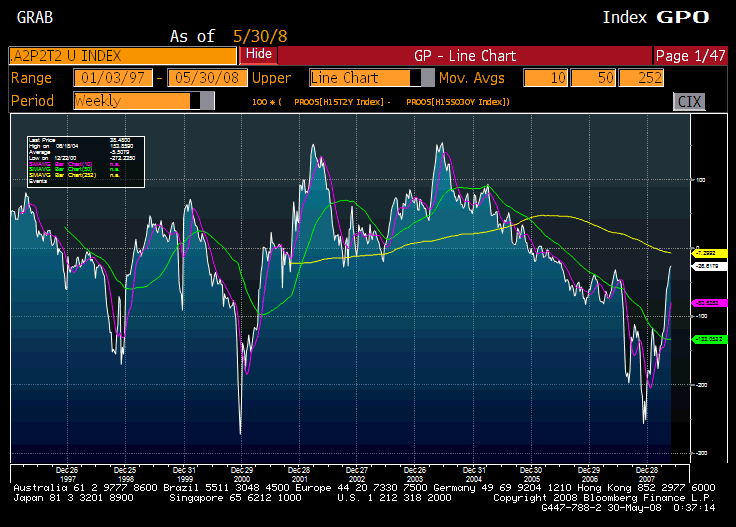 This graph shows the difference between yields on A2/P2 commercial paper and the 2-year Treasury. What this says is that a BBB company can borrow unsecured for a month at 2.7%. Not bad. Now look at the Treasury-Eurodollar [TED] spread:
This graph shows the difference between yields on A2/P2 commercial paper and the 2-year Treasury. What this says is that a BBB company can borrow unsecured for a month at 2.7%. Not bad. Now look at the Treasury-Eurodollar [TED] spread:

Things have improved. The TED spread is down to 0.78%. To me, normal is 60 bp or lower. The question still remains as to what happens when the Fed begins withdrawing its new lending facilities.? As it stands now, they seem to be increasing them further.? (I don’t get it.)
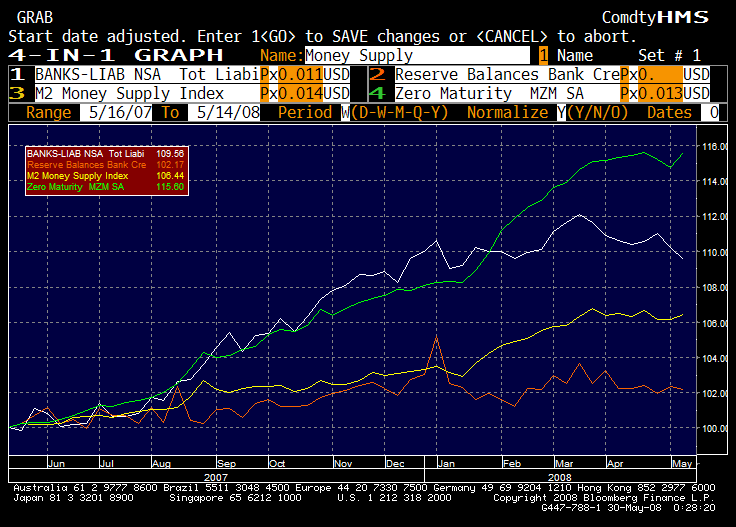
In the midst of this, the Fed has not increased the monetary base in a loosening cycle. The last permanent injection of funds was 5/3/07, long before they started to cut rates. What growth in credit has come from a loosening of the leverage policy toward the banks.
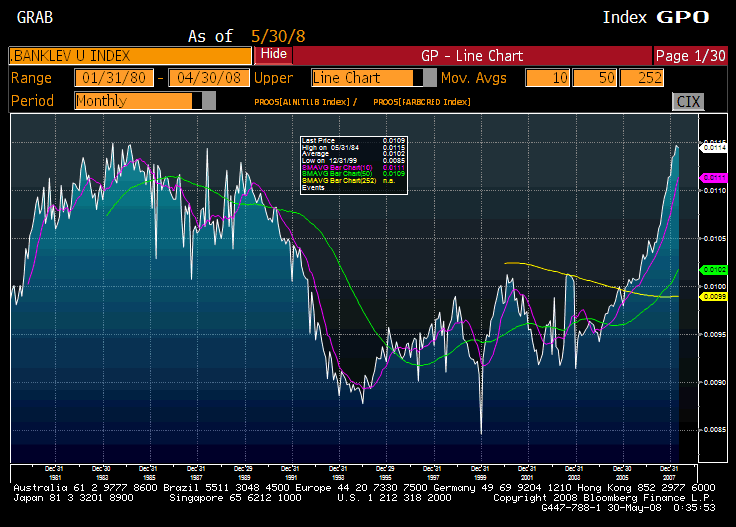
As you can see, we have hit levels of total liabilities of the banking system versus the monetary base of the Federal reserve that we haven’t seen since the early 80s. (I need to multiply that graph by 1000 to show that the multiple is 11x. Oops.)
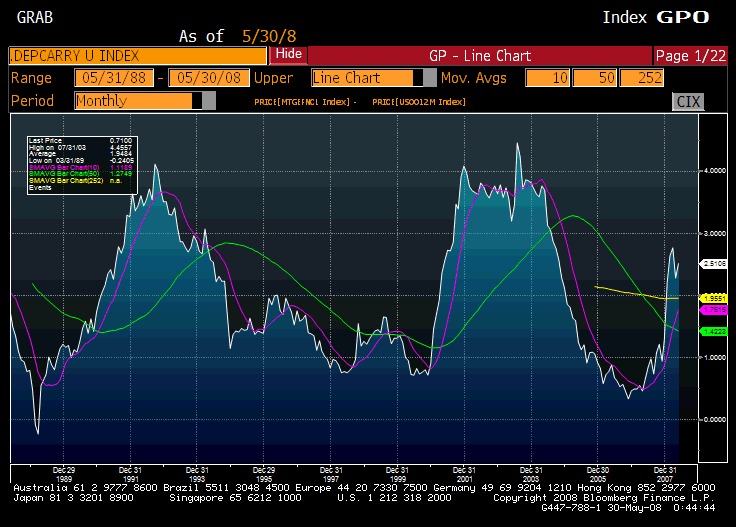
But, my proxy for bank profitability on new money shows that if you can borrow at 12 month US LIBOR, and lend to fund Fannie Mae 30-year mortgage passthroughs, you can make good money now.
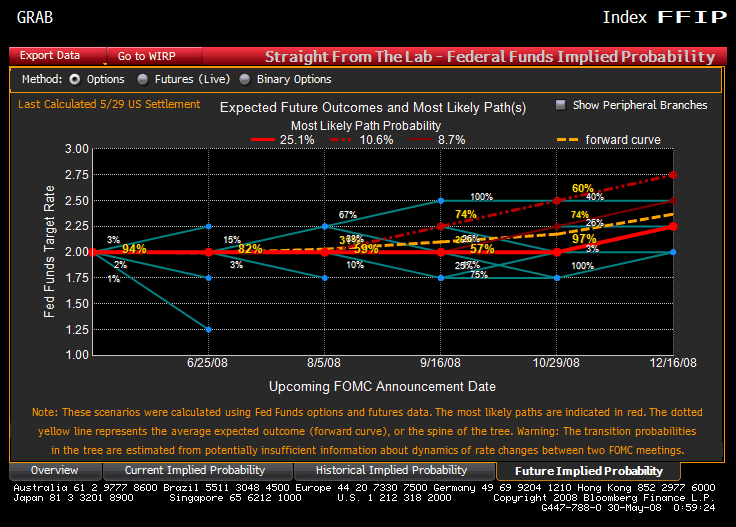
What of Fed funds policy? The market is expecting a 25bp hike in December. I think they are dreaming, but if you are going to bet, you have to know the line.
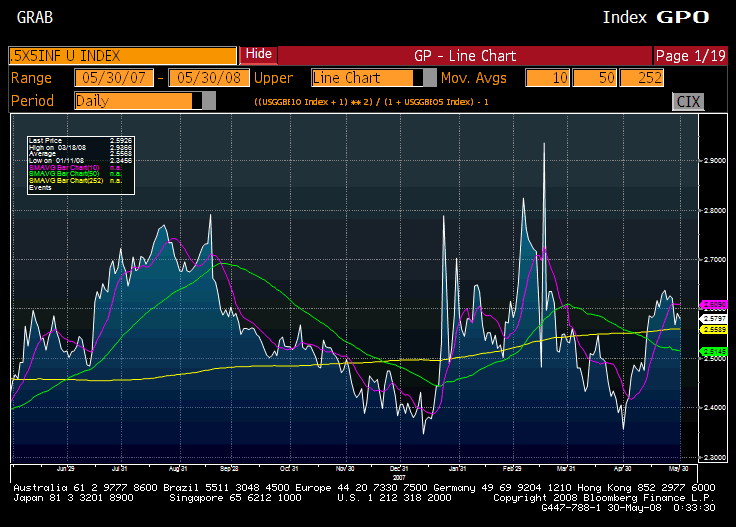
What of inflation expectations? Above is my 5-years forward 5-year inflation graph. The expectations of inflation are low, at least as far as institutional investors are concerned, even as the measure of inflation underlying TIPS rolls ahead at 4% or so.

At least the yield curve has resumed a normal shape, as noted before, that will be good for the banks in the long run.

Now, since mid-March, global long rates have bottomed.? I use 10-year swap rates here because they are more comparable than government bond rates.? From my viewpoint, this is due to an increase in expected nominal growth for the Gross World Product.? I can’t tell whether that is coming through inflation or real growth, but I am guessing at mainly inflation.
So, after all of this, where do I stand?
- We still have problems to work through. (See top list above.)
- The short term lending markets have largely normalized.? So has the yield curve.
- The economy may not be in recession.? Then again, it is probably close to the line.
- Long-term implied inflation measures are quiet amid a jump in global inflation measures.
- Global long rates are rising.
- If the banks can lend, they can make decent money on new loans.
- The Fed is still trying to be “too cute,” solving problems through unorthodox means.? Hey, for now it is good, but who can tell what the long term effects will be.? I am still a skeptic here.? Until they unwind the new lending schemes, and return to a clean balance sheet, the game is not over.

